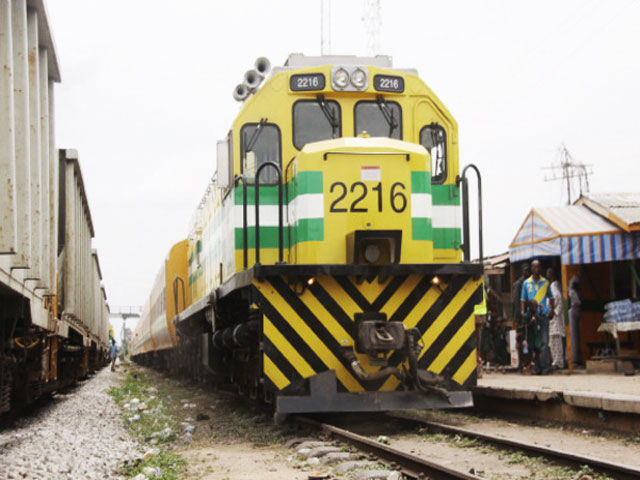APM Terminals Apapa and the Nigerian Railway Corporation (NRC) have begun the evacuation of containers by rail from the Lagos Port Complex, Apapa.
The Nigerian Shippers’ Council (NSC), has directed the resumption of rail operations to APM Terminal, in Lagos Port, In a bid to rescue trapped cargoes and ensure hitch-free evacuation of containers.
The Executive Secretary, NSC, Hassan Bello, stated that the return of rail evacuation would help decongest the terminal and enable export cargoes trapped at various private garages and port corridors to access the ports through the road.
Bello, who was represented by the Director, Regulatory Services, Mrs Ifeoma Ezedinma, at the official flag-off in Lagos, said export is key to the growth of the nation’s economy, and the terminals must be decongested for export goods to gain access into the port.
APM Terminals originally restored the rail service in 2013, running three times per week to Kano and Kaduna.
The General Manager, External Affairs of APM Terminals, Apapa, Daniel Odibe, revealed that the terminal and the NRC have developed a new Standard Operating Procedure (SOP), which would bridge the communication gap and ultimately lead to more efficient cargo evacuation by rail.
He said the new SOP was facilitated by the Nigerian Shippers’ Council (NSC).
“We wish to thank the Nigerian Shippers Council for facilitating this Standard Operating Procedure directed at improving service delivery to shippers and consignees. This is an important milestone for the port. It is something we have always asked for. We want to have a Standard Operating Procedure for receiving trains into the terminal and servicing them. It definitely helps planning when you have adequate information ahead of time,” Odibe said.
He said with the closure of a section of the Apapa Bridge for repair works, the resumption of cargo evacuation by rail will help in reducing the backlog of cargoes at the port.
He said, “Our intention when we constructed the rail line in 2013 and connected it to the national line, was to provide alternate mode of evacuation of cargoes to customers. So coming together to improve on the number of containers that we evacuate by rail line is coming at the best time with the bridge closure. It will take away some trucks from the road.”
READ ALSO: AfDB approves $1.2M grant for Ethiopia-Sudan Railway feasibility study
The Lagos District Manager of NRC, Jerry Oche, said, “A train is made up of 19 wagons and each of the wagons can take one 40feet or two 20feet containers. So, if we are doing 40feet, that is 19 trucks off the road and if it is 20feet, that is 38 trucks off the road per trip. We are starting with two trips per day and we hope to increase it in no distant time.”
Also speaking, Director, Regulatory Services of Nigerian Shippers Council, Ifeoma Ezedinma, said, “This will help decongest our road because we now have multimodal transport – access to road, waterways and the train.”
“Right now we have an SOP that we enable us to receive the right containers coming to APMT without any hindrance and also enable us to service the trains within the agreed timelines. We do not envisage more challenges with the commencement of the SOP, and it will also create a platform for us to meet, review the past and seek ways to improve.
“What we proposed was for four trains in a day within every 12 hours, but NRC advised we start with two, and scale up as we go, and assured that the process will be sustained.”
He remarked that with a part of the bridge closed, it will make a huge impact to decongest the terminals at the port.












